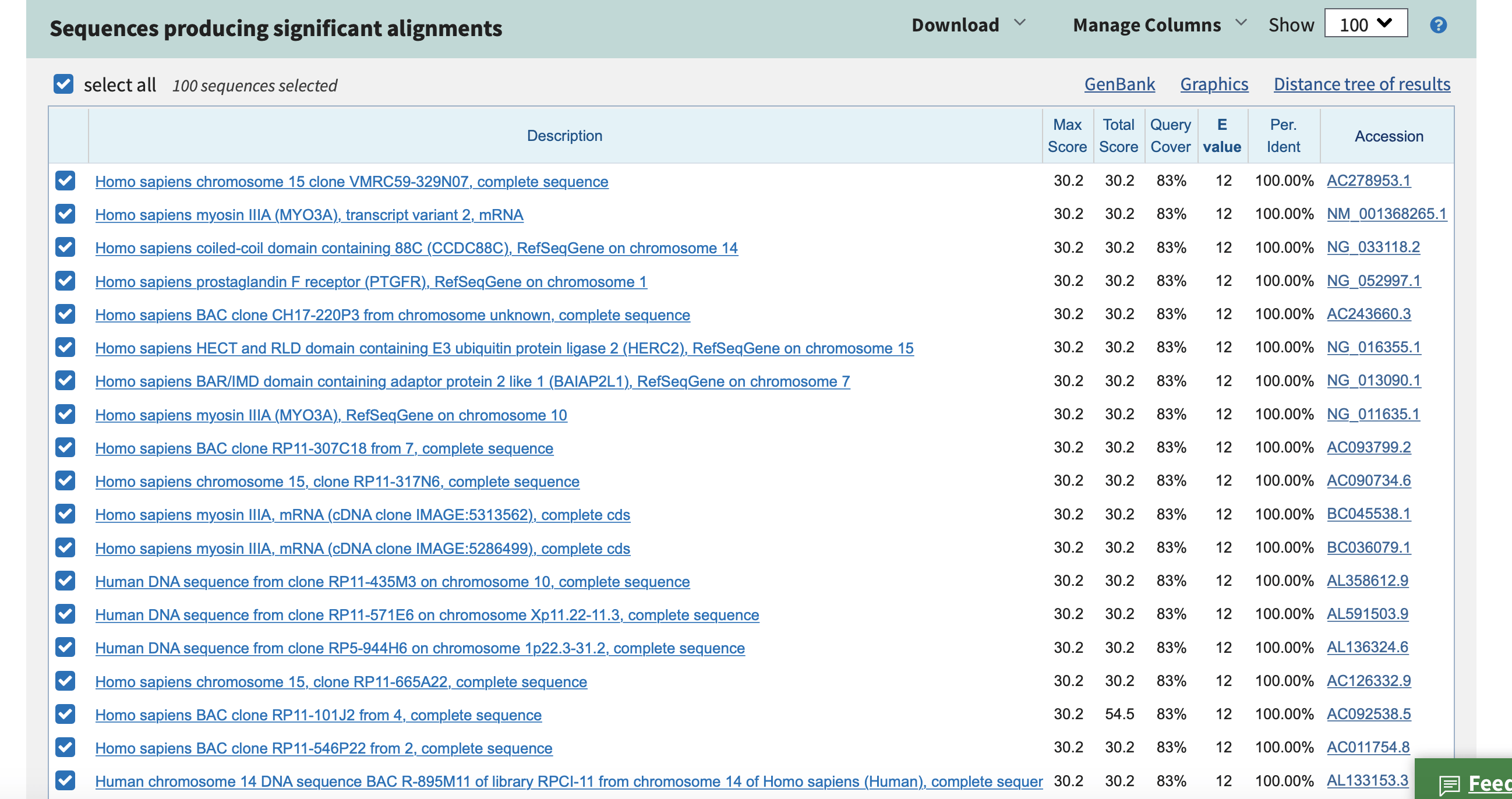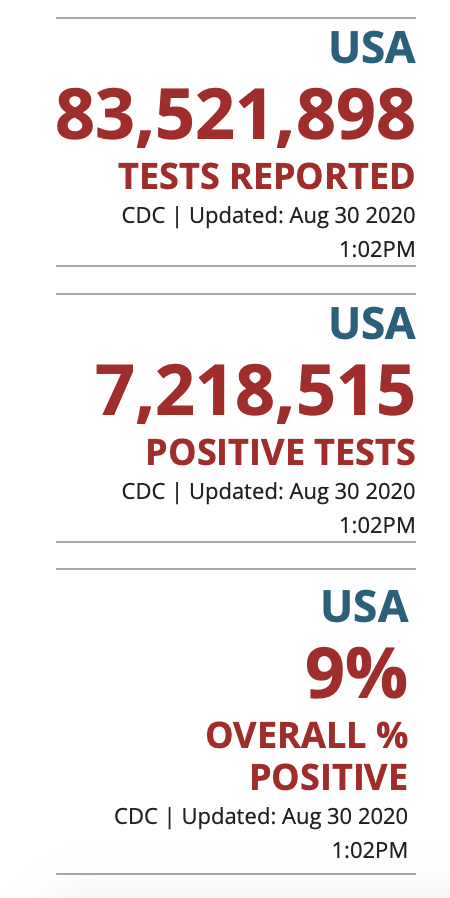
Flawed reasoning: If the SARS-CoV-2 RT-PCR test detected human DNA, then all tests would return a positive result. This is clearly contradicted by the fact that, as of 30 August 2020, only about 9% of all tests administered in the U.S. have been positive.

FULL CLAIM: “WHO coronavirus PCR test primer sequence is found in all human DNA”; “this means that the WHO test kits should find a positive result in all humans”
REVIEW
A blog post claiming that the SARS-CoV-2 nucleic acid test would give positive results for every test because it also identifies human DNA was published in April 2020 and has received more than 13,000 interactions on Facebook and other social media platforms like Reddit, according to social media analytics tool CrowdTangle. Although it was published several months ago, the article saw a resurgence of interest on social media in August 2020.
Claims that call into question the nucleic acid tests used to detect SARS-CoV-2 are not new; Health Feedback also reviewed a related claim that the PCR test would detect other coronaviruses and found it to be false, as the test is highly specific to SARS-CoV-2 and does not detect genetic material from other coronaviruses.
The Piece of Mindful blog post takes a different tack from the earlier claim by citing the protocol of a SARS-CoV-2 nucleic acid test developed at the Pasteur Institute in Paris, France, which is available on the website of the World Health Organization. The protocol lists the nucleotide sequences of various primers used in the test. According to the blog post, the sequence of one primer matches that of a sequence found on the human chromosome 8 and because of this, the post claims that the test would also detect human DNA, thereby giving false-positive results. As we explain below, this claim stems from a fundamental misunderstanding of how PCR works.
The laboratory technique known as PCR, or polymerase chain reaction, is a widely-used technique in laboratories worldwide that was invented by Kary Mullis, who received the 1993 Nobel Prize in Chemistry for this work. PCR is used to make many copies of a particular segment of nucleic acid (DNA/RNA), a process known as amplification, which enables scientists to detect tiny amounts of nucleic acid in a sample (see animation video by Cold Spring Harbor Laboratory’s DNA Learning Center below).
The method of choice for detecting SARS-CoV-2 in most countries is a variant of PCR which detects RNA, called reverse transcription PCR (RT-PCR) (SARS-CoV-2 is an RNA virus).
Our knowledge of the SARS-CoV-2 genetic sequence allows us to design primers that specifically bind to sequences that are unique to the virus, based on the principle of complementary base pairing. These primers are required to start the amplification process. In the protocol, the primers in question detect the presence of the gene sequence for RNA-dependent RNA polymerase (RdRp), which encodes an enzyme that is needed to make more copies of the viral genome[1].
However, primers act in pairs. In order to begin the amplification process, it is essential for both the forward and reverse primers to bind to (anneal) flanking regions of the same target sequence. Although the sequence CTCCCTTTGTTGTGTTGT, which matches the reverse primer, also exists on human chromosome 8, the forward primer listed in the protocol (ATGAGCTTAGTCCTGTTG) does not bind to any sequence on chromosome 8. Therefore, this pair of primers would never be able to amplify any region of the human chromosome 8. We demonstrate the mismatch with the forward primer below (Figure 1) by using the Basic Local Alignment Search Tool (BLAST), developed by the U.S. National Center for Biotechnology Information, to align the forward primer listed in the protocol with the human genome.
As we can see from the results, none of the sequences among the top alignments in the list, which are partial matches that may not bind to human DNA to begin with, can be found on chromosome 8. This indicates that the forward primer is unable to flank the same target region as the reverse primer and hence the amplification step in the RT-PCR test cannot take place. The two primers also could not amplify a sequence on any other part of the human genome, not just chromosome 8, because there is no good match for the forward primer and even if the two primers managed to anneal anyway, they would not be close enough together to amplify anything.
 Figure 1. Results of sequence alignment between the forward primer for SARS-CoV-2 RdRp (ATGAGCTTAGTCCTGTTG) and the human genome. The top 19 results of the search are displayed.
Figure 1. Results of sequence alignment between the forward primer for SARS-CoV-2 RdRp (ATGAGCTTAGTCCTGTTG) and the human genome. The top 19 results of the search are displayed.
In summary, although the sequence CTCCCTTTGTTGTGTTGT is present in the human chromosome 8, only one of the two primers used in the test for SARS-CoV-2 is able to recognize this sequence. The test would therefore always produce a negative result if only human DNA was present. Therefore the claim that the RT-PCR test would produce a false-positive result due to the presence of human DNA—and the implication that the number of positive SARS-CoV-2 test results is artificially inflated for this reason—is incorrect and misleading. Furthermore, it is evident from testing statistics that not all tests produce positive results; according to the U.S. Centers for Disease Control and Prevention’s COVID Data Tracker, only 9% of all tests conducted in the U.S. are positive as of 30 August 2020, as Lead Stories pointed out in their fact-check of the same blog post:

REFERENCES
- 1 – Gao et al. (2020) Structure of the RNA-dependent RNA polymerase from COVID-19 virus. Science.


